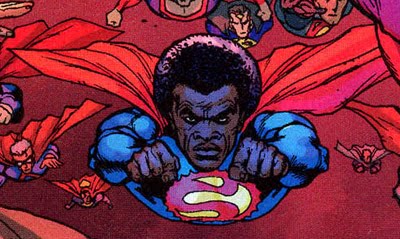Lolita is a novel by Vladimir Nabokov, written in English and published in 1955 in Paris and 1958 in New York. It was later translated by its Russian-native author into Russian. The novel is notable for its controversial subject: the protagonist and unreliable narrator, middle-aged literature professor and hebephile Humbert Humbert, is obsessed with the 12-year-old Dolores Haze, with whom he becomes sexually involved after he becomes her stepfather. “Lolita” is his private nickname for Dolores.
In April 1947, Nabokov wrote to Edmund Wilson: “I am writing … a short novel about a man who liked little girls—and it’s going to be called The Kingdom by the Sea….” The work expanded into Lolita during the next eight years. Nabokov used the title A Kingdom by the Sea in his 1974 pseudo-autobiographical novel Look at the Harlequins! for a Lolita-like book written by the narrator who, in addition, travels with his teenage daughter Bel from motel to motel after the death of her mother; later, his fourth wife is Bel’s look-alike and shares her birthday.
Some critics have accepted Humbert’s version of events at face value. In 1959, novelist Robertson Davies excused the narrator entirely, writing that the theme of Lolita is “not the corruption of an innocent child by a cunning adult, but the exploitation of a weak adult by a corrupt child. This is no pretty theme, but it is one with which social workers, magistrates and psychiatrists are familiar.”
The novel abounds in allusions to classical and modern literature. Virtually all of them have been noted in The Annotated Lolita edited and annotated by Alfred Appel, Jr. Many are references to Humbert’s own favourite poet, Edgar Allan Poe.
Chapter 26 of Part One contains a parody of James Joyce‘s stream of consciousness.
Humbert Humbert’s field of expertise is French literature (one of his jobs is writing a series of educational works that compare French writers to English writers), and as such there are several references to French literature, including the authors Gustave Flaubert, Marcel Proust, François Rabelais, Charles Baudelaire, Prosper Mérimée, Remy Belleau, Honoré de Balzac, and Pierre de Ronsard.
Vladimir Nabokov was fond of Lewis Carroll and had translated Alice in Wonderland into Russian. He even called Carroll the “first Humbert Humbert”.
Lolita contains a few brief allusions in the text to the Alice books, though overall Nabokov avoided direct allusions to Carroll. In her book, Tramp: The Life of Charlie Chaplin, Joyce Milton claims that a major inspiration for the novel was Charlie Chaplin‘s relationship with his second wife, Lita Grey, whose real name was Lillita and is often misstated as Lolita. Graham Vickers in his book Chasing Lolita: How Popular Culture Corrupted Nabokov’s Little Girl All Over Again argues that the two major real-world predecessors of Humbert are Lewis Carroll and Charlie Chaplin. Although Appel’s comprehensive Annotated Lolita contains no references to Charlie Chaplin, others have picked up several oblique references to Chaplin’s life in Nabokov’s book. Bill Delaney notes that at the end Lolita and her husband move to the Alaskan town of Grey Star while Chaplin’s The Gold Rush, set in Alaska, was originally set to star Lita Grey. Lolita’s first sexual encounter was with a boy named Charlie Holmes, whom Humbert describes as “the silent…but indefatigable Charlie.” Chaplin had an artist paint Lita Grey in imitation of Joshua Reynolds‘s painting The Age of Innocence. When Humbert visits Lolita in a class at her school, he notes a print of the same painting in the classroom. Delaney’s article notes many other parallels as well.
In chapter 29 of Part Two, Humbert comments that Lolita looks “like Botticelli’s russet Venus—the same soft nose, the same blurred beauty”, referencing Sandro Botticelli‘s depiction of Venus in, perhaps, The Birth of Venus or Venus and Mars.
In chapter 35 of Part Two, Humbert’s “death sentence” on Quilty parodies the rhythm and use of anaphora in T. S. Eliot‘s poem Ash Wednesday.
Many other references to classical and Romantic literature abound, including references to Lord Byron‘s Childe Harold’s Pilgrimage and to the poetry of Laurence Sterne.
After its publication, Lolita attained a classic status, becoming one of the best-known and most controversial examples of 20th century literature. The name Lolita has entered pop culture to describe a sexually precocious girl. The novel was adapted to film by Stanley Kubrick in 1962, and again in 1997 by Adrian Lyne. It has also been adapted several times for stage and has been the subject of two operas, two ballets, and an acclaimed but failed Broadway musical.
 Lolita (Stanley Kubrick, 1992)
Lolita (Stanley Kubrick, 1992)
Bert Stern worked as a photographer on Lolita and shot the publicity photographs of Sue Lyon.
 The Crush (Alan Shapiro, 1993)
The Crush (Alan Shapiro, 1993)
The plot of The Crush was based on an actual incident involving the neighbor of Shapiro.
 Peter Sellers plays Claire Quilty, a pompous hipster playwright, the alter ego and nemesis to James Mason’s lustful professor, Humbert Humbert. Lolita (Stanley Kubrick, 1962)
Peter Sellers plays Claire Quilty, a pompous hipster playwright, the alter ego and nemesis to James Mason’s lustful professor, Humbert Humbert. Lolita (Stanley Kubrick, 1962)
























 Natalie Wood, 1964
Natalie Wood, 1964




